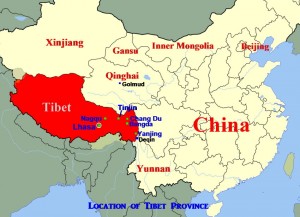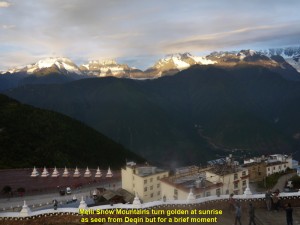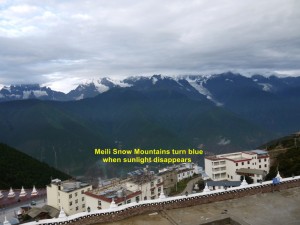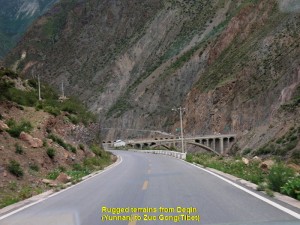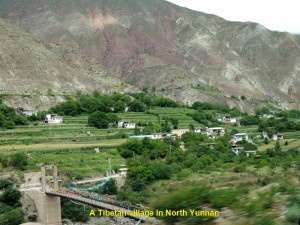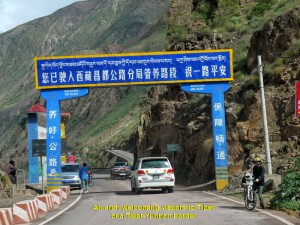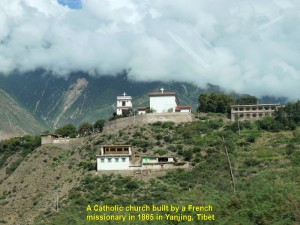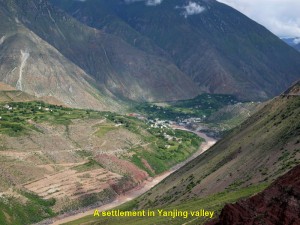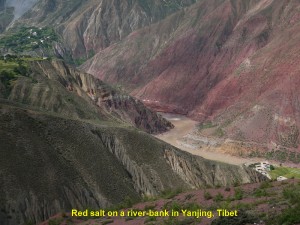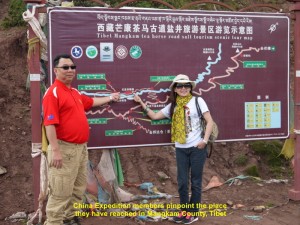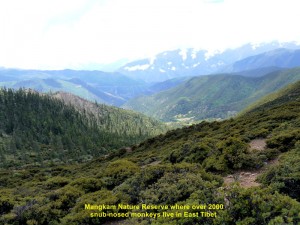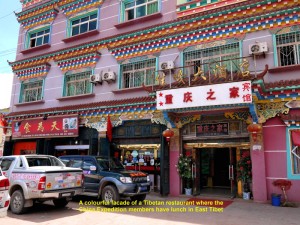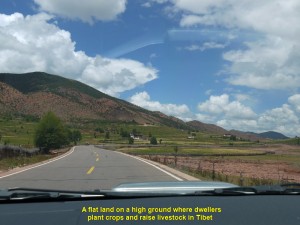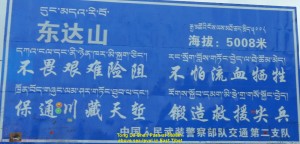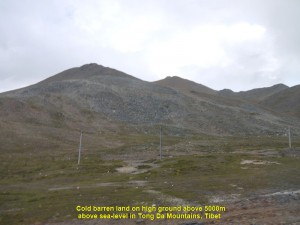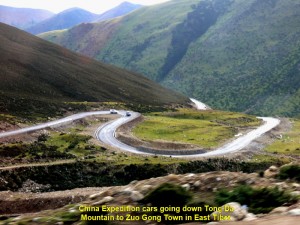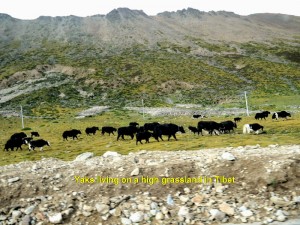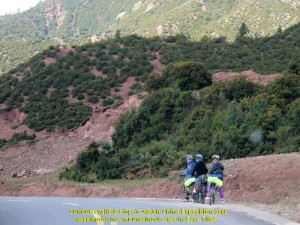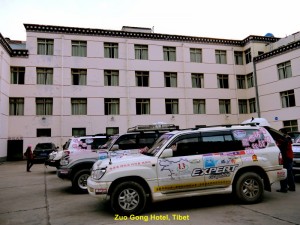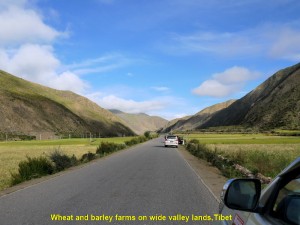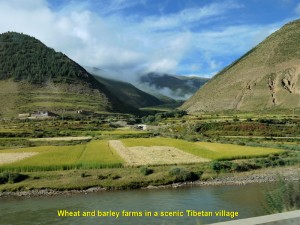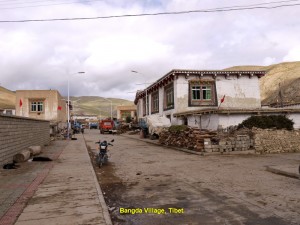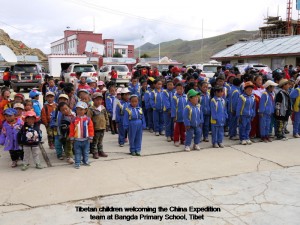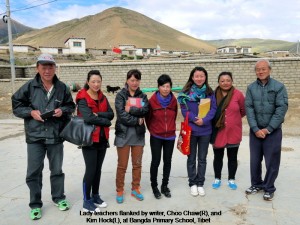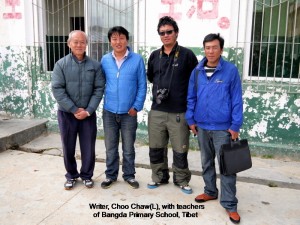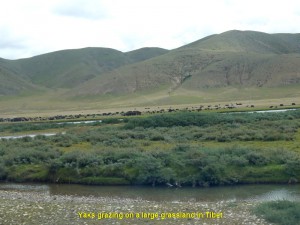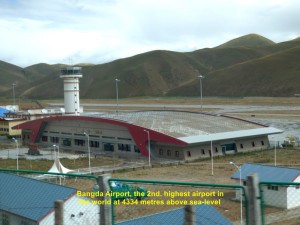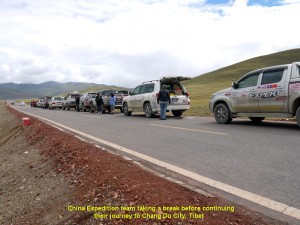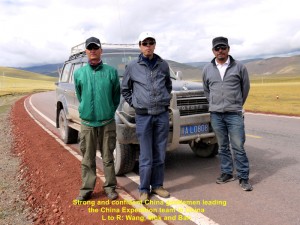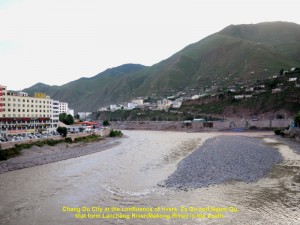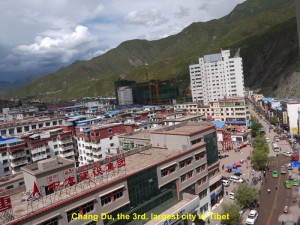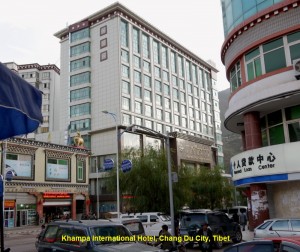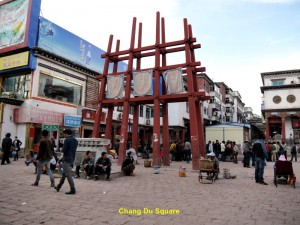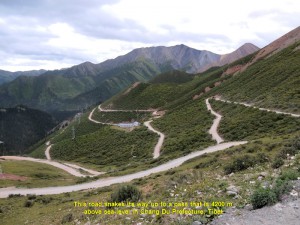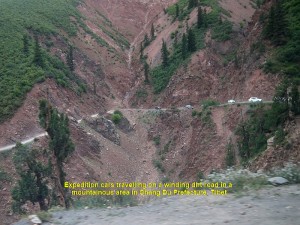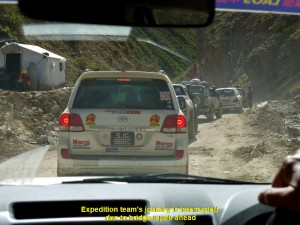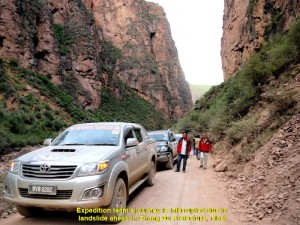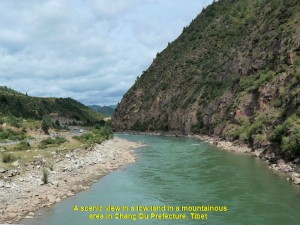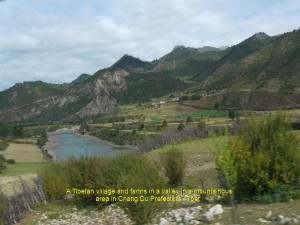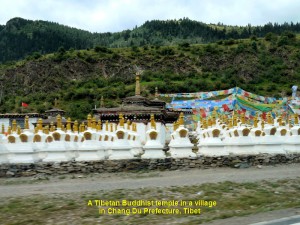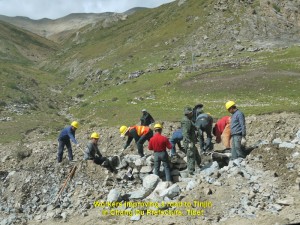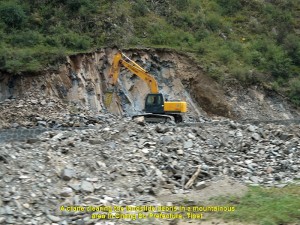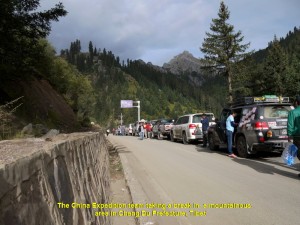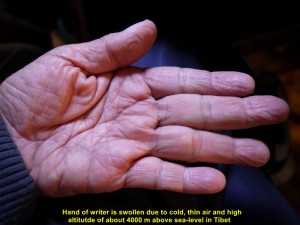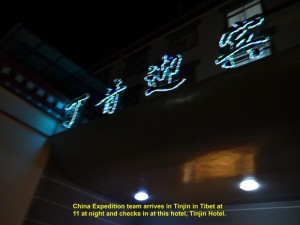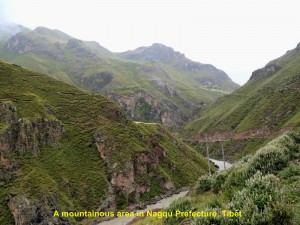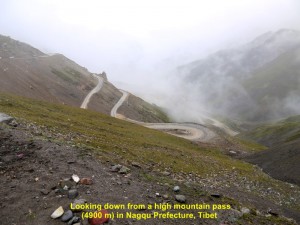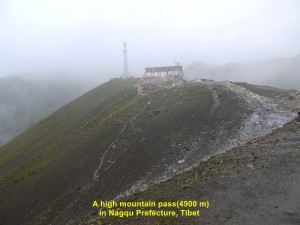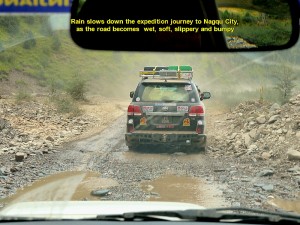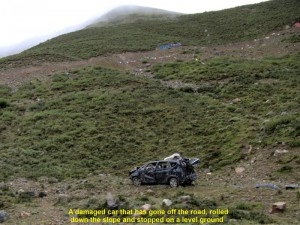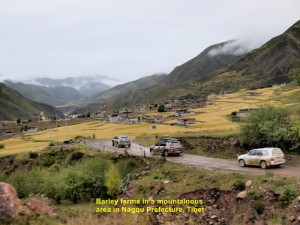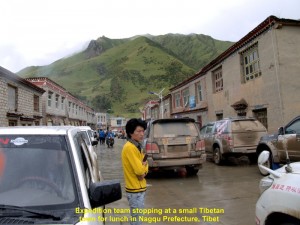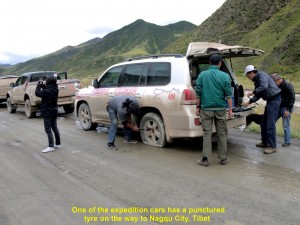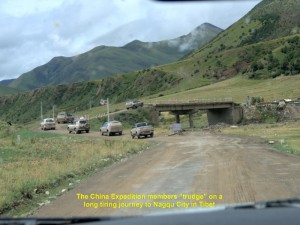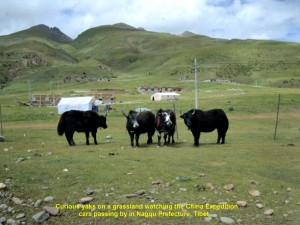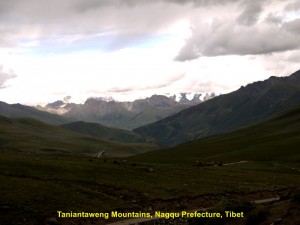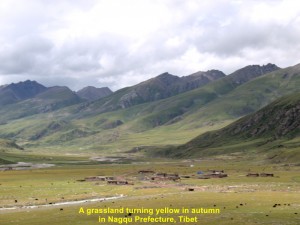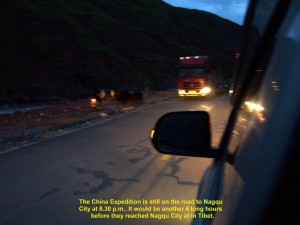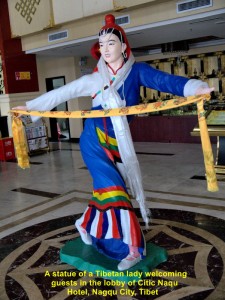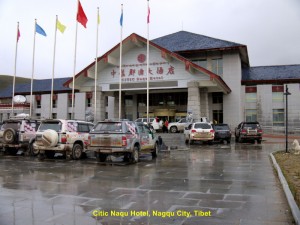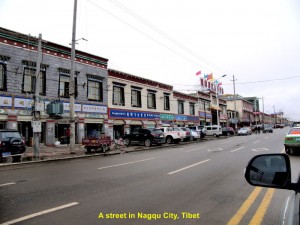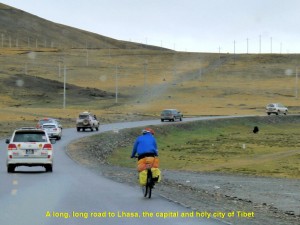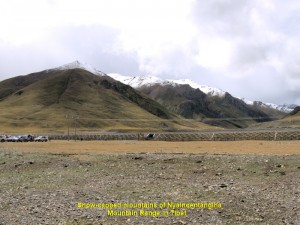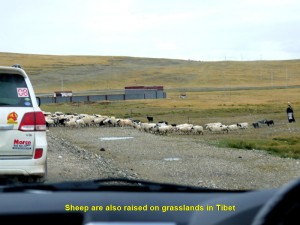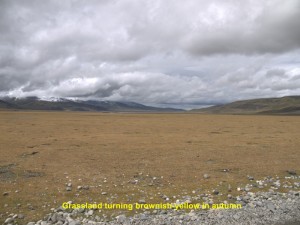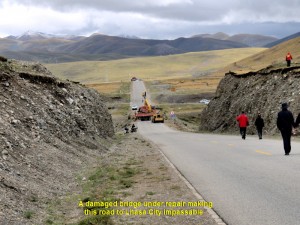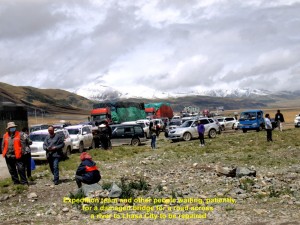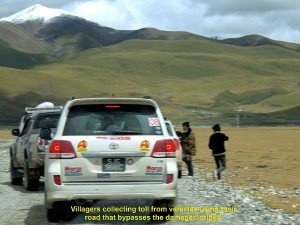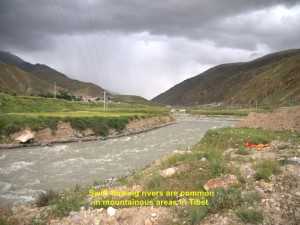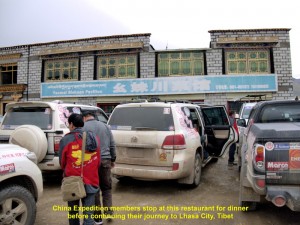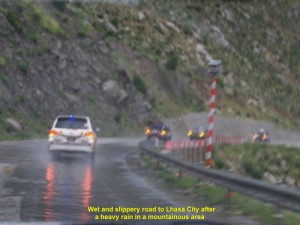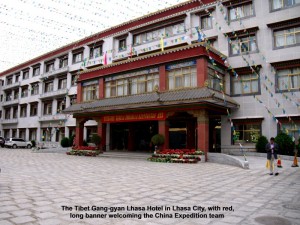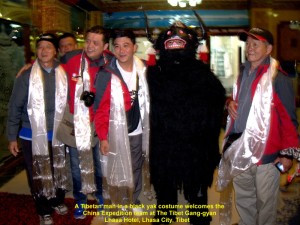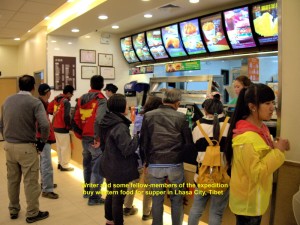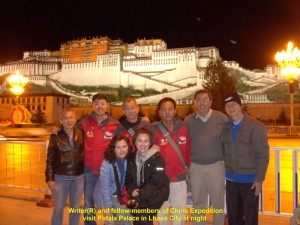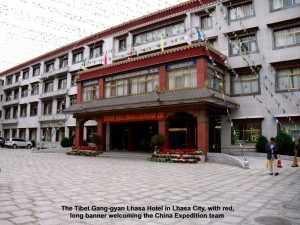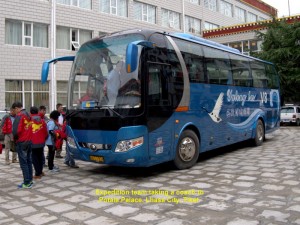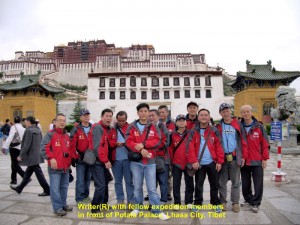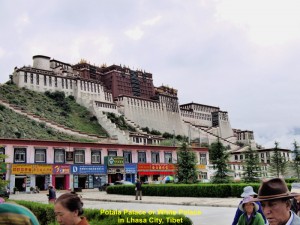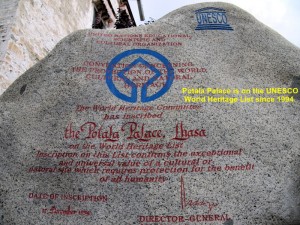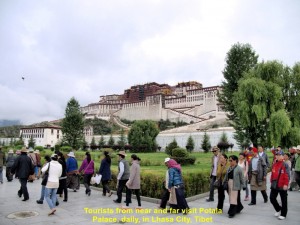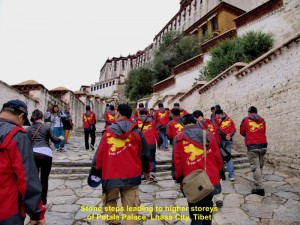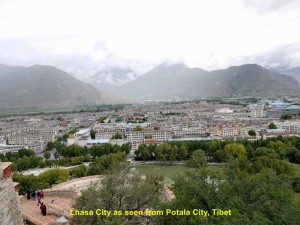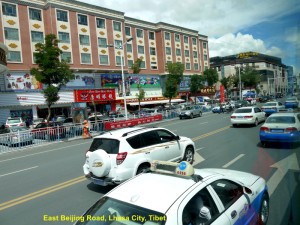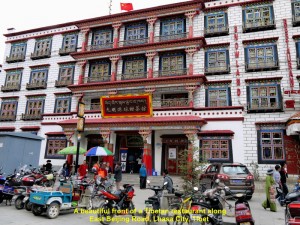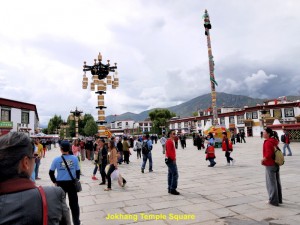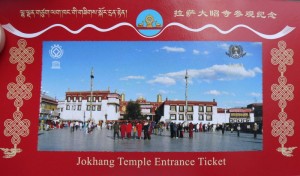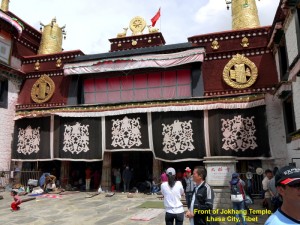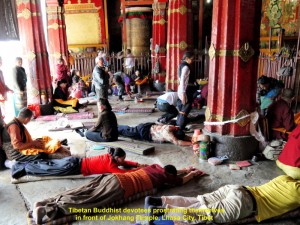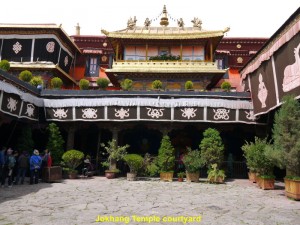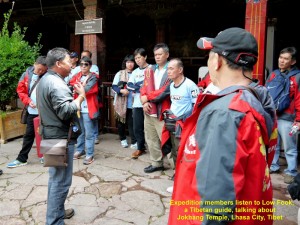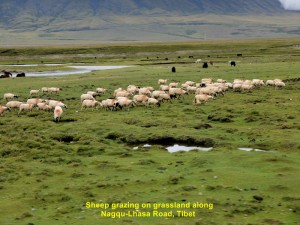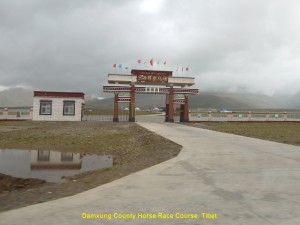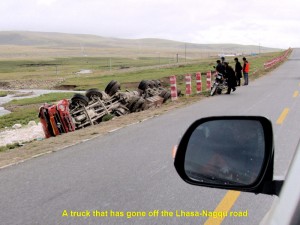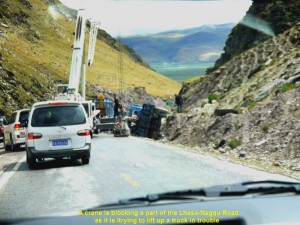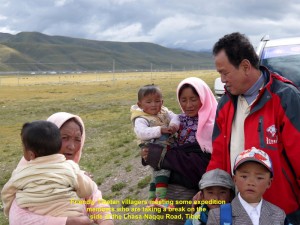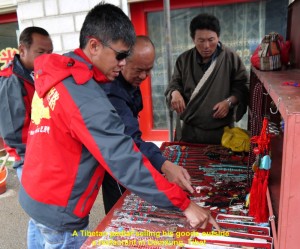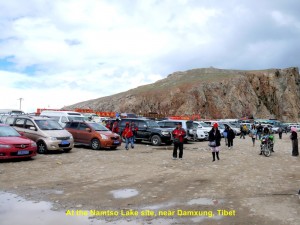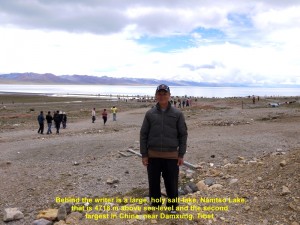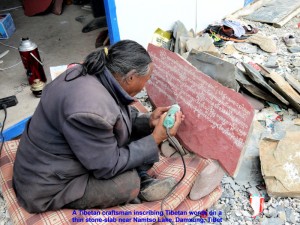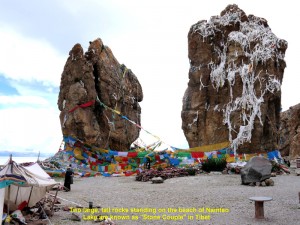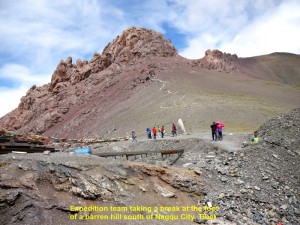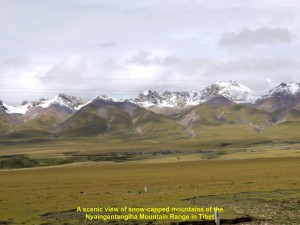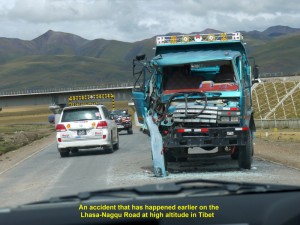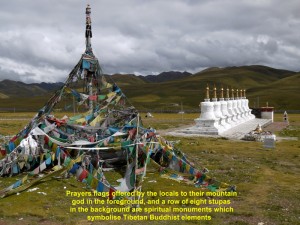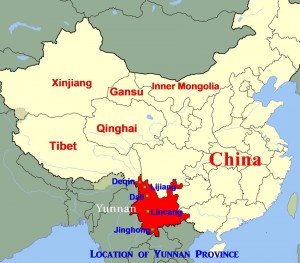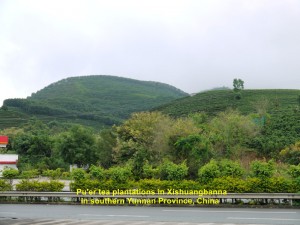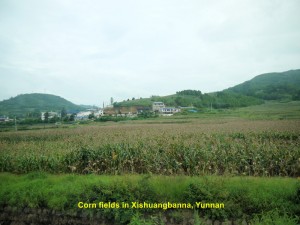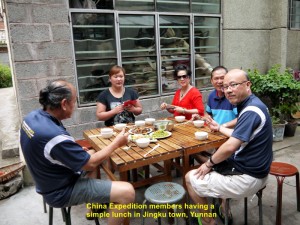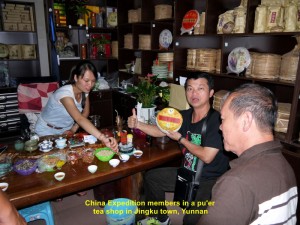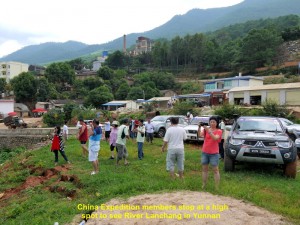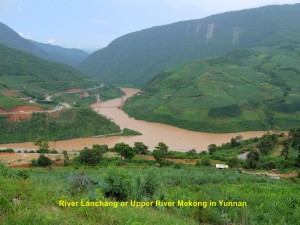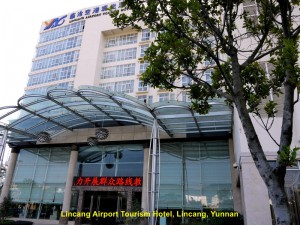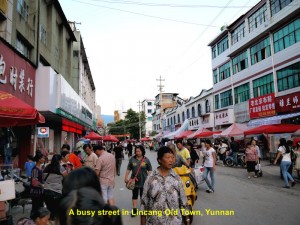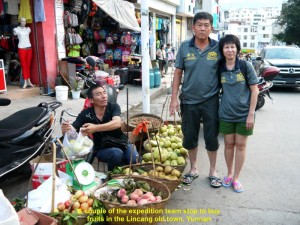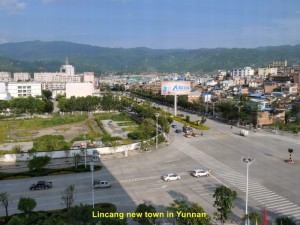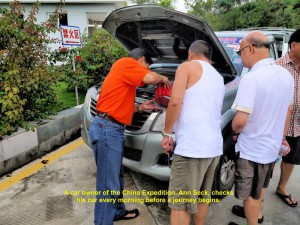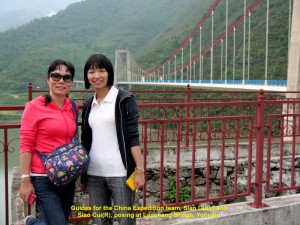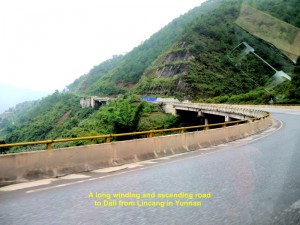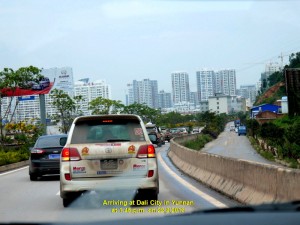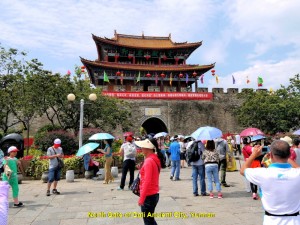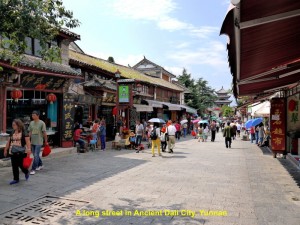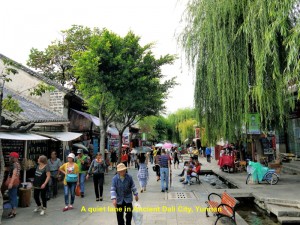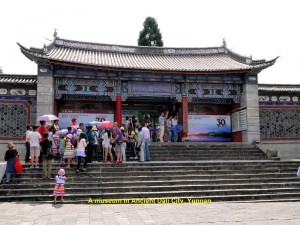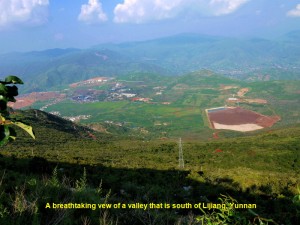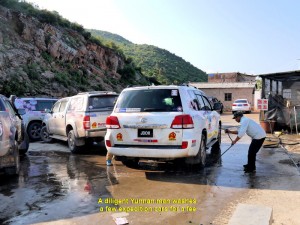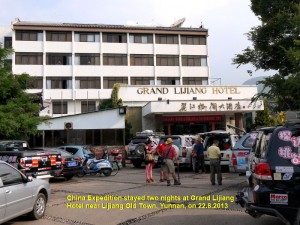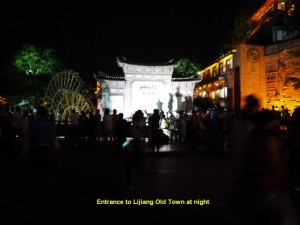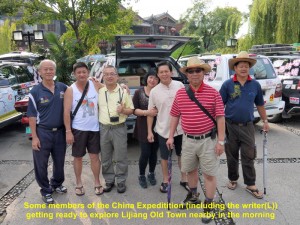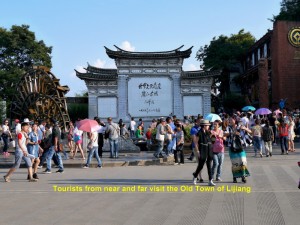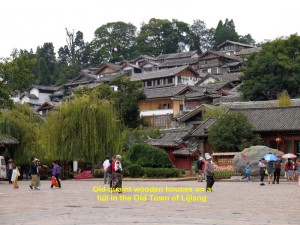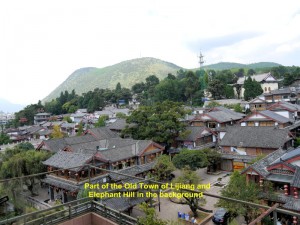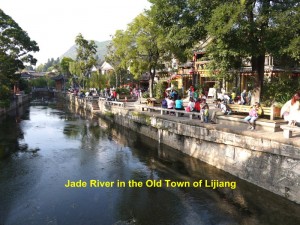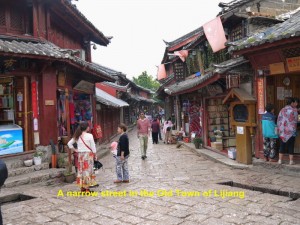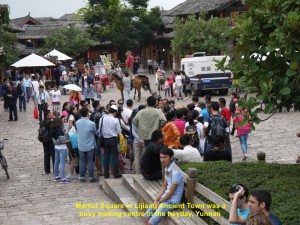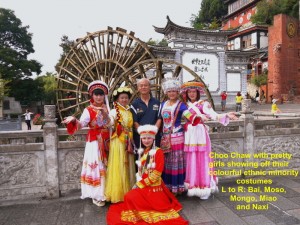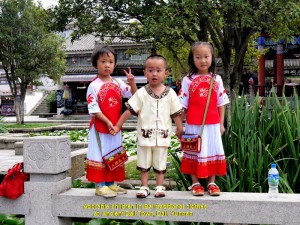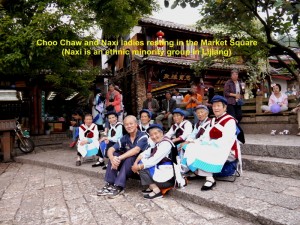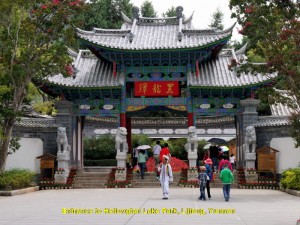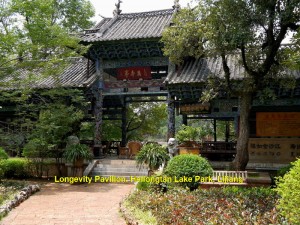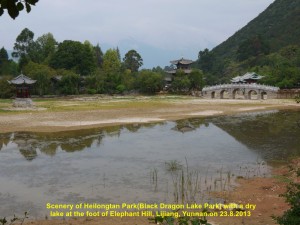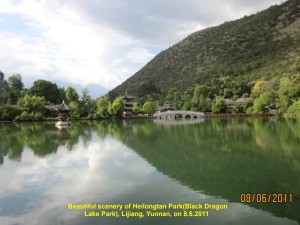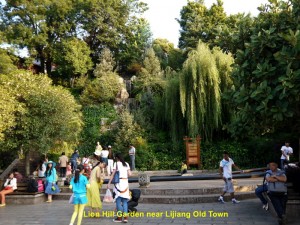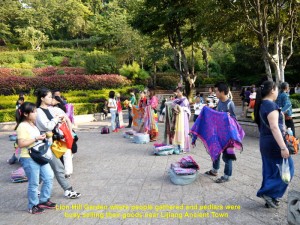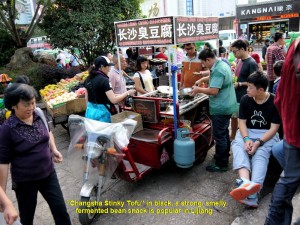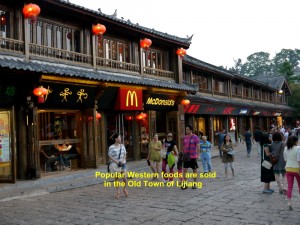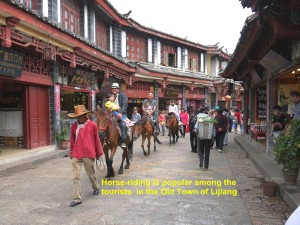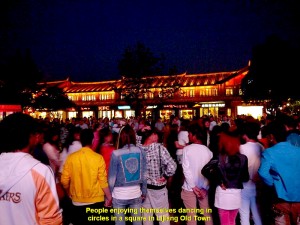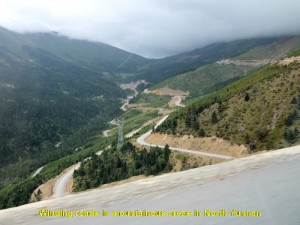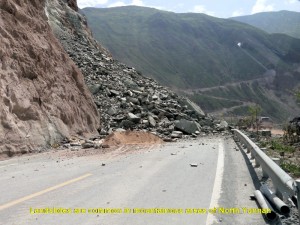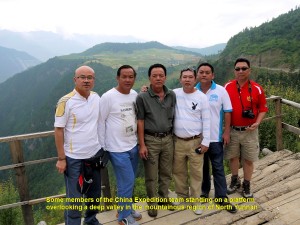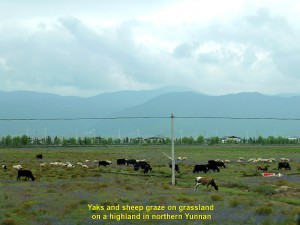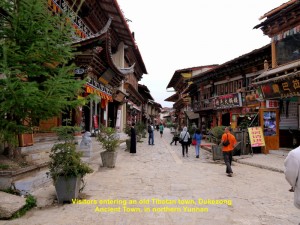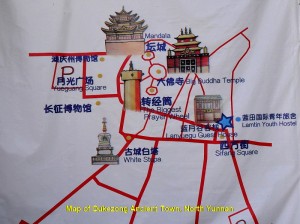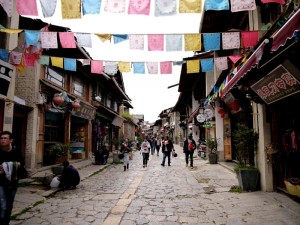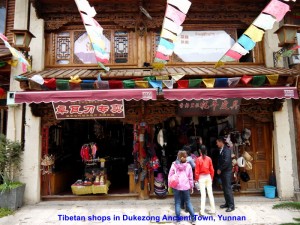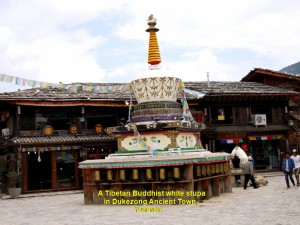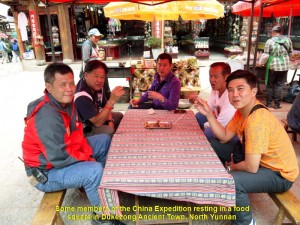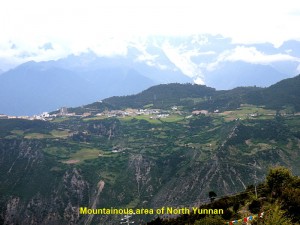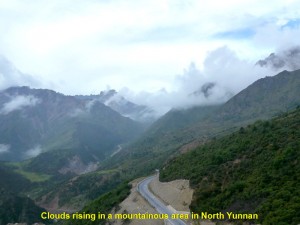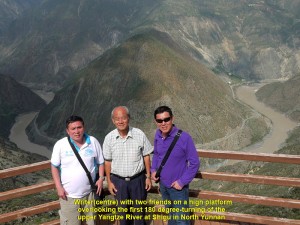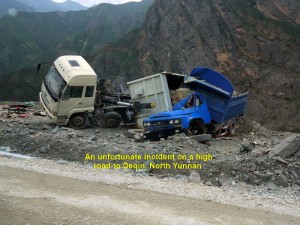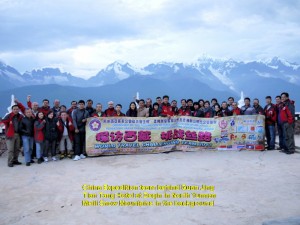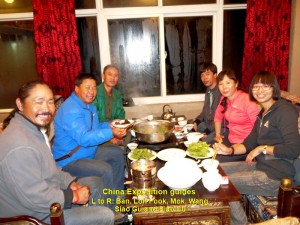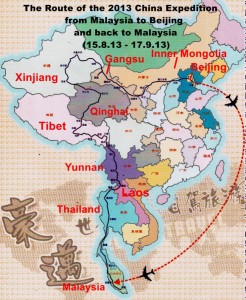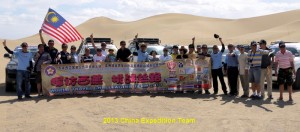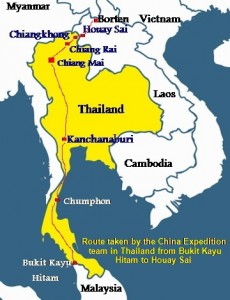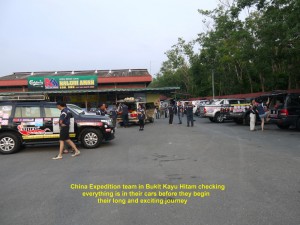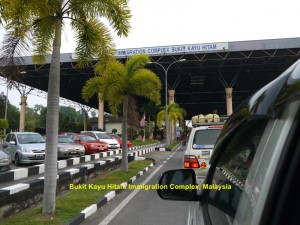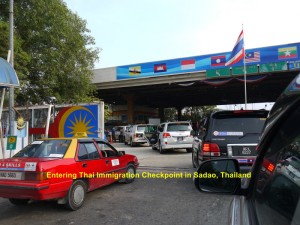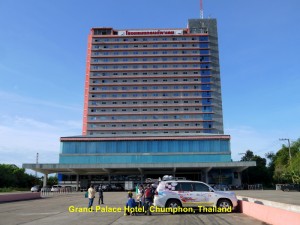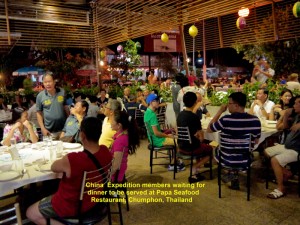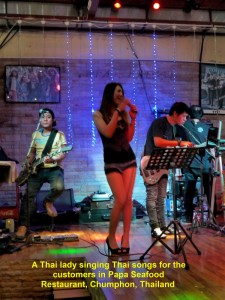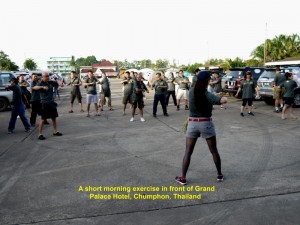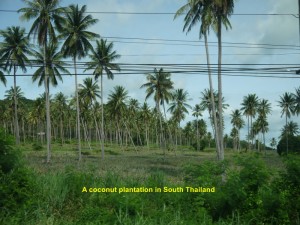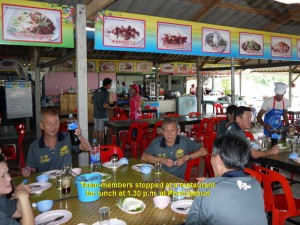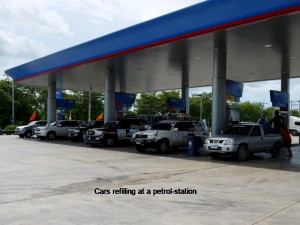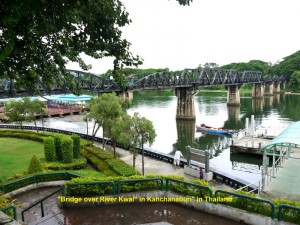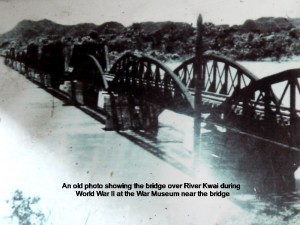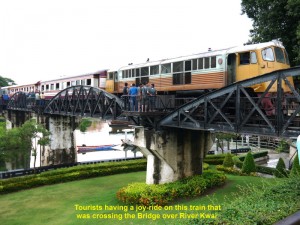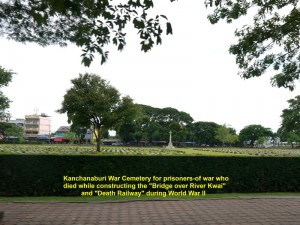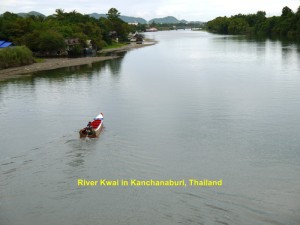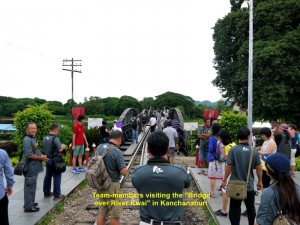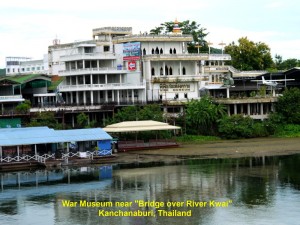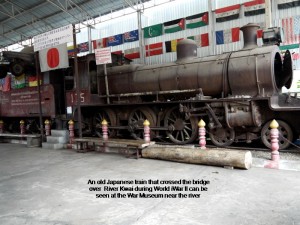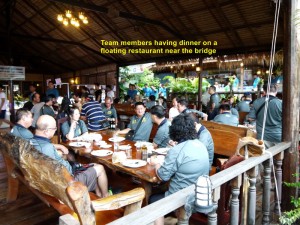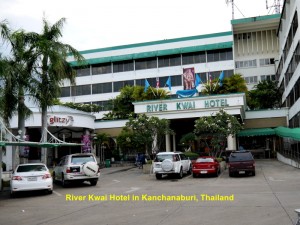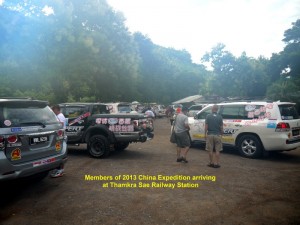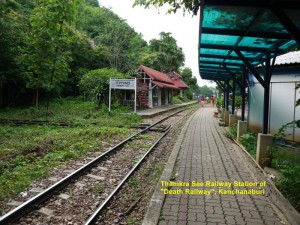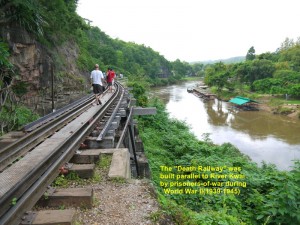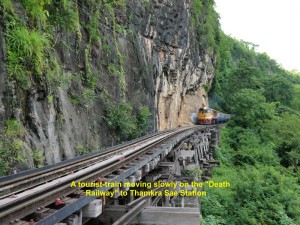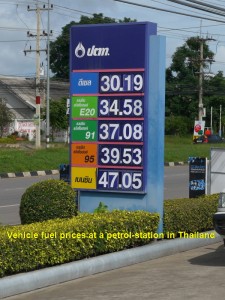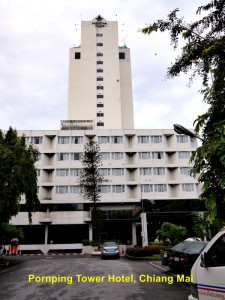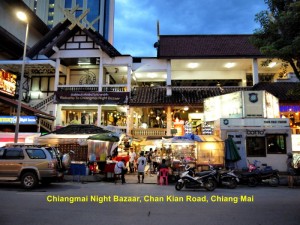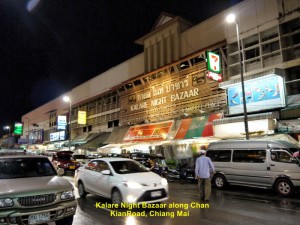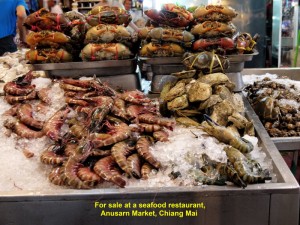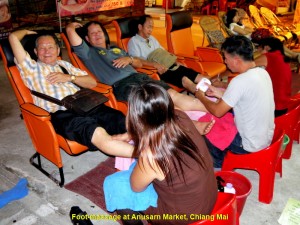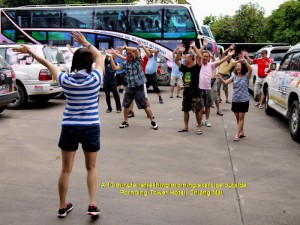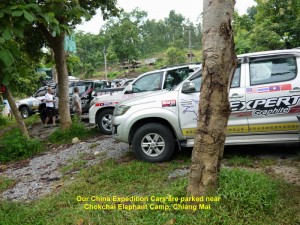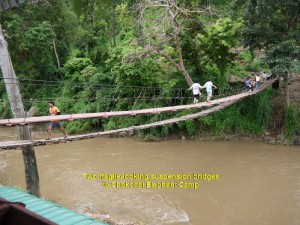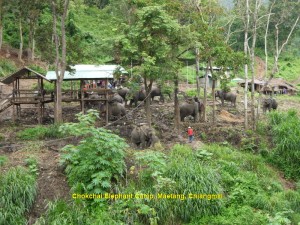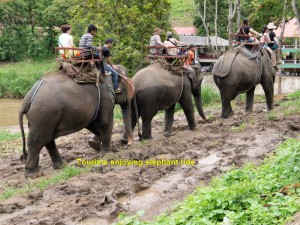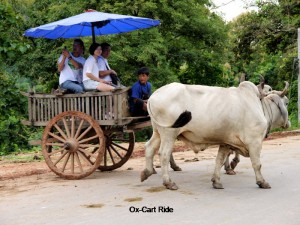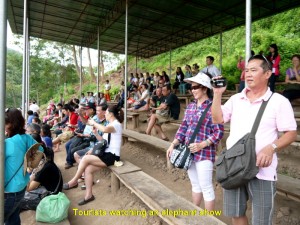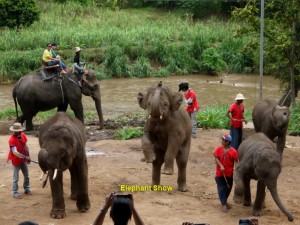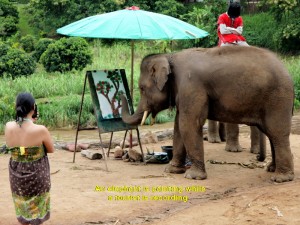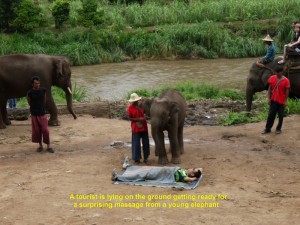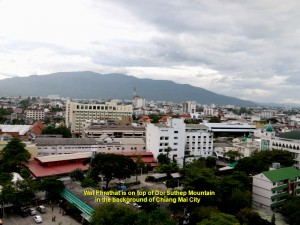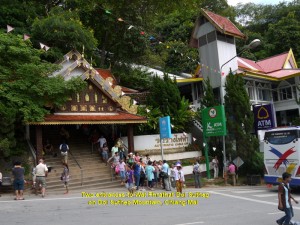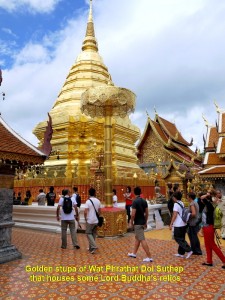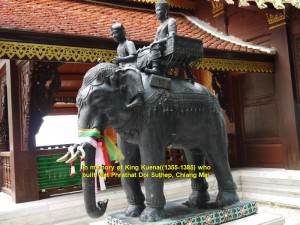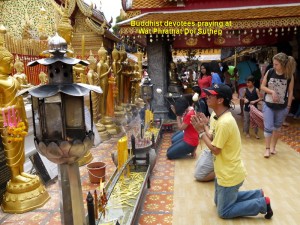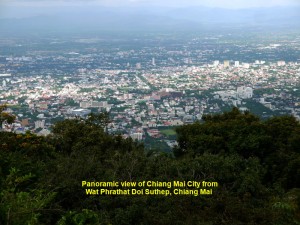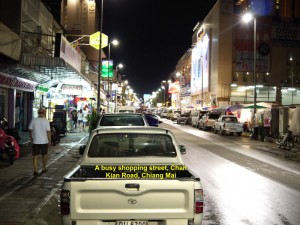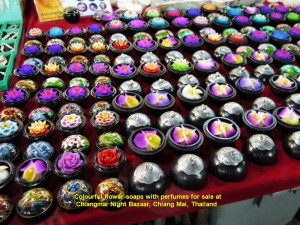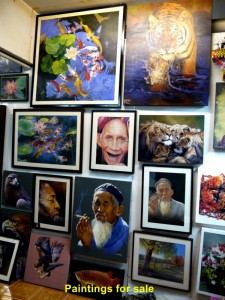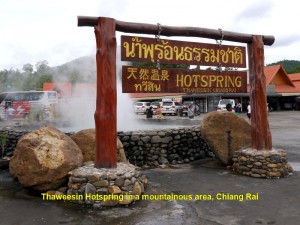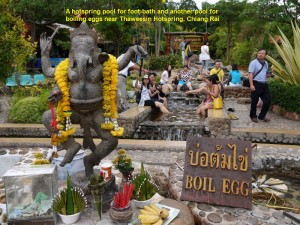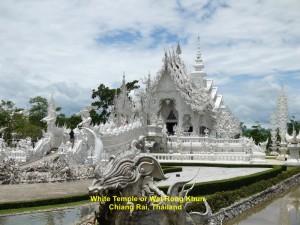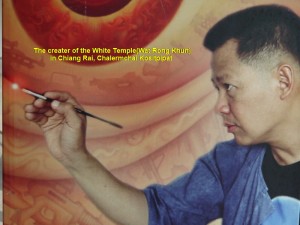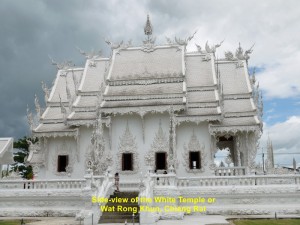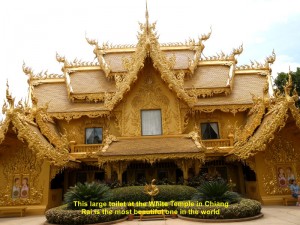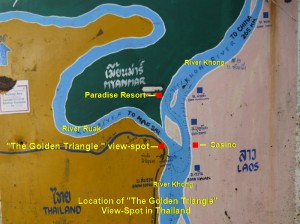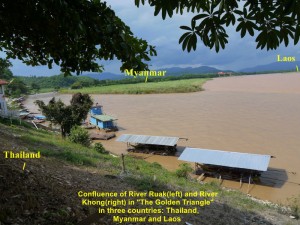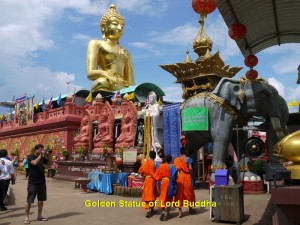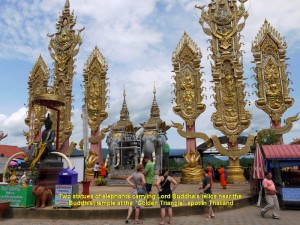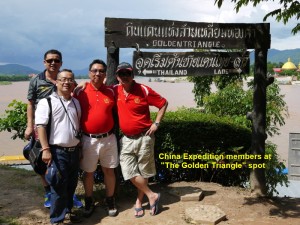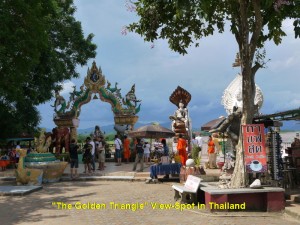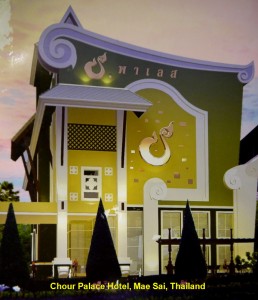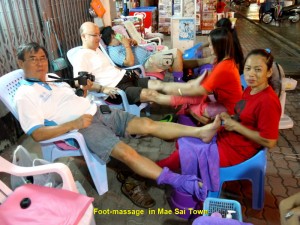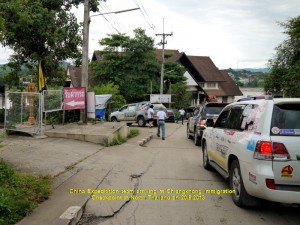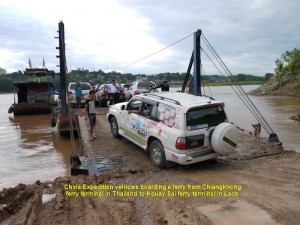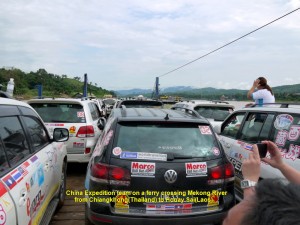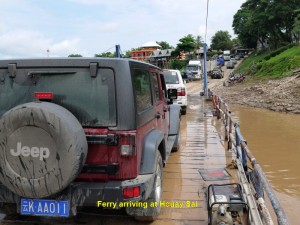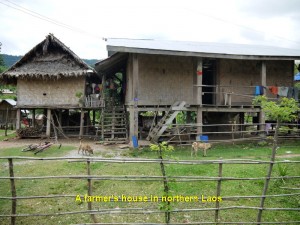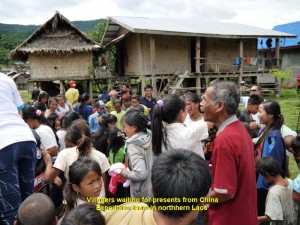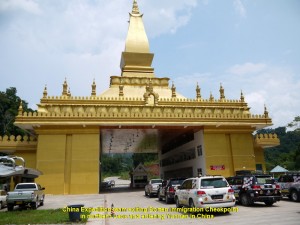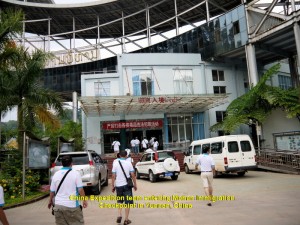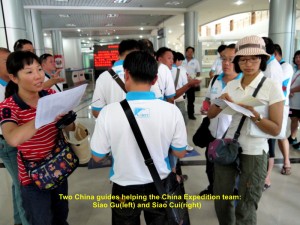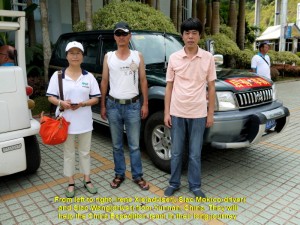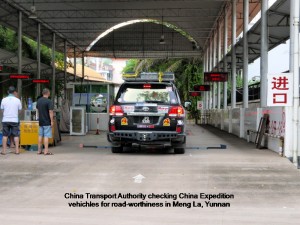Journal of My 2013 China Expedition Part III (Tibet)
Journal of My 2013 China Expedition Part III (Tibet)
(15.8.2013 – 17.9.2013)
Part III
Tibet Journey(Day 11 – 17)
Day 11(25.8.2013, Sunday)
Deqin – Zuo Gong
(Distance: 385 km)
Today it would be a long and difficult journey again, a journey that we had to go to higher ground known as the “Roof of the World” or the Tibetan Plateau of over 4ooo m above sea-level.
Yesterday, we travelled from Lijiang to Deqin where we stayed for a night at Jing Tian Tang Hotel on a high mountain in north-east Yunnan.
Today, we woke up early. At 7 a.m. while the sun was rising, we went outside the hotel and were awe-stricken by the breathtaking scene of Meili Snow Mountains in the south-west. The mountains were golden in colour for several minutes. But when the sunlight disappeared, they turned blue. We, patiently, waited for a while for the change to happen. Owing to many clouds in the sky, the mountains still remained blue.
At 8 a.m. we left the hotel and moved down a winding road and then up again. Occasionally, we passed through villages, travelled on roads parallel to rivers, crossed bridges and went through a few tunnels. We stopped at one or two gas-stations for the cars to be refilled.
After travelling for three hours in the morning, we crossed a Tibetan border and stopped at a checkpoint where some soldiers checked some of our cars. Then we moved on again to Zuo Gong Town. Several minutes later, in Markam County, Tibet, we saw a Catholic church on a hill in the distance. It was white-washed with two prominent crosses. According to our China guide, it was built by a French missionary, Felix Biet(1838-1901) in 1865 in a Yanjing village or “Yerkalo” village. It was the only Catholic church in the Buddhist country of Tibet. About half of the villagers had become Catholic(500).
We did not stop to look at the church until we came to a place where we could see from a high ground a river in another village in a valley of Yanjing. That river had red salt on its banks. In the olden days, that salt was an important commodity which attracted traders from near and far creating a salt route in Markam(Mang Kang) County.
Then we continued our journey . Later, we stopped at another place where we saw a forest reserve, Mang Kang Nature Reserve, from a vantage-point. In that forest, over 2000 snub-nosed monkeys lived.
At 12.30 p.m. we left the nature reserve and travelled for an hour and a half before we arrived at a Tibetan restaurant with colourful facade in a town. After our lunch in that restaurant we moved on again. This time we had to go up a mountain pass at 5008 metres above sea-level, Tong Da Shan Pass, and then down the mountain to a town known as Zuo Gong.
When we reached the high pass at 6 p.m. we alighted our cars and looked at the scenes around us. We saw high mountains in the distance, and barren but permafrost-land around us. The air around us was windy and chilly.
A few minutes later, we made our way down a winding road. On the way we saw cyclists and hitch-hikers travelling west to Lhasa, and passed villages, farms and grasslands where yaks grazed.
Soon we reached Zuo Gong in the evening, had dinner and stayed at Zuo Gong Hotel for a night.
Day 12 (26.8.2013, Monday)
Zuo Gong – Chang Du
(Distance: 252 km)
Today, we would be taking Route 317 to Lhasa via Tinjin in the north, instead of a shorter one, Route 318 via Pome in the west of Zuo Gong. It was because of a bridge that had collapsed near Pome making the road impassable, and our journey to Lhasa would be over 200 km longer.
At 8 a.m. we left Zuo Gong and headed north for Chang Du first. On the way, we came across Tibetan villages, wheat and barley farms and grasslands where the yaks grazed.
After two hours of travelling, we stopped at a small village, Bangda, and visited a small school. We were warmly welcomed by over 100 children and a few staff. We spent some time interacting with them. Before we left, we gave away some presents to them.
On the way to Chang Du, we came across more villages and farms. There were large grasslands where thousands of yaks were raised by Tibetan nomads. Several kilometres north of Bangda, we saw the 2nd. highest airport in the world, Bangda Airport, at 4334 m above sea-level.
Occasionally, we stopped by a roadside for a short break answering a call of nature and, at the same time, enjoying breathing in fresh air and sights of picturesque natural landscapes.
Having travelled for several hours, we, finally, arrived at Chang Du City at 2.30 p.m. where we checked in at a hotel, Khampa International Hotel.
Chang Du City, the 3rd. largest city in Tibet, is located at the confluence of two rivers, Za Qu and Ngom Qu. These rivers flow south and later join up with Lanchang River(Upper Mekong River). After checking in at the hotel, we went out and walked along some streets for sightseeing. Then at 6.30 p.m. we had dinner together at a restaurant near the hotel.
We stayed at the hotel for a night before we left in the morning for Tinjin in the west.
Day 13 (27.8.2013, Tuesday)
Chang Du – Tinjin
(Distance: 248 km)
At 8 a.m. we left Chang Du and went west to Tinjin. The road to Tinjin was rough and problematic.
Most of it was winding and not tarred. Where the place was dry, it was dusty, and where the place was wet, it was slippery, soft and dirty. Besides, pot-holes, constant repairs and improvements of many parts of the road delayed our journey, considerably.
The worst problem was the landslide that covered a few short stretches of the road forcing vehicles to take temporary rough roads that bypassed them, or wait until the road was cleared of landslide-debris. Owing to all those and other unfavourable factors, our journey was not smooth, and we took a much longer time to reach Tinjin at 11.00 p.m.(a journey of 15 hours!)
Although the journey was tough, we enjoyed the beautiful natural sceneries and picturesque villages.
Besides, we saw Buddhist Tibetan temples, grasslands and farmlands. We were thankful to the workers we came across on the journey for repairing, improving or clearing roads of landslide-debris.
When we arrived at Tinjin at 11 p.m., we felt, completely, exhausted. Some of us felt dizzy and nauseous due to cold, thin air and high altitude of over 4000 metres above sea-level. This sickness is known as “acute mountain sickness”. To avoid this uncomfortable condition, we were advised to take a medicine we had brought along.
At night we stayed at a hotel, Tinjin Hotel, in the city.
Day 14 (28.8.2013, Wednesday)
Tinjin – Nagqu
(Distance: 380 km)
Today, it would be a much longer and worse journey than yesterday’s. Most of it was in the mountainous areas of over 3500 m above sea-level in Nagqu Prefecture.
A few high passes of over 4000 m above sea-level had to be crossed before we could get to Nagqu City from Tinjin. Rain often occurred in these areas making dirt roads wet, soft, bumpy and slippery, and slowing down our journey. In spite of all those unfavourable conditions, the sights of the mountainous areas would be spectacular.
As the journey for today was going to be long, we started at 7 in the morning. We travelled along winding roads in the mountains and roads running parallel to rivers in the valleys. We went up a mountain to reach a high mountain-pass of 4200 m above sea-level, and later a higher one of about 4900 m above sea-level.
At a place, while going up a mountain, we saw a damaged car on a slope. It might have gone off a road and rolled down the slope for about 300 m before it stopped and stood on its four wheels.
In the lowlands, we passed through villages, barley-farmlands and grasslands. At 11.30 p.m. we stopped for lunch at a small town, and another for dinner at 7.30 p.m.. We also stopped a few times on the roadsides for a short break to answer a nature call and stretch our stiff legs. Sometimes, when we stopped for a break, we met and conversed with friendly strangers.
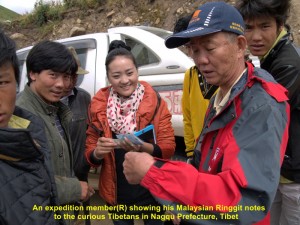
Curious Tibetans learning about Malaysian currency from an expedition member(R) in Nagqu Prefecture, Tibet
Some of our expedition cars did have some trouble, but, fortunately, they were minor ones. On one occasion, one of them had a punctured tyre and was then replaced, immediately, by three of our helpful China guides. On another occasion, another car, accidentally, brushed against a local car on a soft dirt road in a countryside, and the owner of the latter asked for an unreasonable sum for the minor damage. There was one car belonging to one of our team-members that had an alternator problem in Tinjin. It had to be ordered and sent from Malaysia to Lhasa where it was later fixed in the car in Lhasa.
Our journey on high and low lands to Nagqu continued. For the first time in our journey, we saw yaks at close range at 3.30 p.m., and snow-capped mountains of Taniantaweng Mountains at 4,30 p.m. in Nagqu Prefecture in Tibet.
The journey from Tinjin to Nagqu City was a treacherous and unforgettable one. It took us too long to reach Nagqu City causing some of us sick. Anyway, we arrived, safely, at the city at 2.30 in the morning, after travelling a total of 19.5 hours! We checked in at Citic Naqu Hotel, immediately. The moment I entered a hotel room, I went straight for the bed, dropped onto it and slept until late morning.
Day 15 (29.8.2013. Thursday)
Nagqu – Lhasa
(Distance: 383 km)
This morning we woke up very late, as we arrived late at the hotel. At 10.15 a.m. we left for Lhasa, the capital of Tibet, that is south of Nagqu City.
On the way, we saw trains running on the north-south railway a few times. That railway from Golmud to Lhasa(1142 km long) is known as Qinghai-Tibet Railway, the highest railway in the world. About 85% of it is above 4000 km above sea-level, and the highest point it reaches is 5072 m above sea-level. This engineering feat is one of China’s great achievements in this century.
It crosses three mountain ranges, many rivers and lakes, giving its passengers a chance to see many spectacular diverse natural landscape during their whole journey. Its carriages have special enriched oxygen and ultra-violet(UV) protection systems. The trains on this line travels at a speed of about 100 km/h.
The road to Lhasa was good as it was tarred and most of it was straight and level. After two hours of travelling from Nagqu, we saw snow-capped mountains in the distance on our right. These mountains are known as Nyainqentangiha Mountains. Occasionally, rain fell making the road wet and slippery, and water in rivers flowing, rapidly. While travelling, we passed through valleys, villages and grasslands where yaks and sheep grazed.
At 12.40 p.m. we reached a place where a long line of vehicles stopped on the road. Later, we learned that a bridge further down the road was damaged and under repair. Our China chief guide went to see the head of a village nearby asking for his permission to use his village road that bypassed the bridge, but he refused despite the willingness to pay him some money.
After two and a half hours had passed, the bridge was not ready yet. So our chief China guide appealed to the village-head to allow us to use his road. He relented, but we had to pay him a toll of RMB50 for each car for the maintenance of his road. We, gladly, paid him and were on our way again. Soon we were ascending a road in a mountainous area and reached a high mountain pass of 4200 m above sea-level at 4 p.m..
At 5.10 p.m. we arrived at Damxung where we stopped at a small restaurant for dinner. After the quick dinner, we moved on again, travelling parallel to a river and the railway. Then we were on a winding and ascending road again in another mountainous area where it was raining heavily.
Finally, at 8.30 p.m. we arrived at Lhasa City, the capital of Tibet. We went straight to a hotel where we were warmly welcomed by the hotel staff and two men in a black yak costume performed a welcome-dance. Then we were each given a long white silk scarf as a gesture of goodwill.
After checking in at the hotel, a few fellow-members and I walked along a main street, East Beijing Road, and stopped at a restaurant where we had western food for supper. Later, we walked to a world famous building, Potala Palace. As it was closed at night we looked at it from a distance. Built on a small hill, it was large and brightly-lit. Later, we took trishaws back to the hotel.
Day 16 (30.8.2013, Friday)
Lhasa Citiy Tour
Today, it would be a relaxing day. We were going to visit two famous tourists’ places of attraction, Potala Palace and Jokhang Temple in Lhasa City.
At 9 in the morning, a bus brought us to Potala Palace. It is a large, unique, majestic-looking building. Built on a mountain(Marpo RI), it has 13 storeys that house statues of Buddha and past Dalai Lamas, shrines, religious murals, scriptures, libraries, etc. At the top storey of the building is the Dalai Lama’s office. (The present 14th. Dalai Lama is in exile in India since the 1959 Tibetan uprising.)
It was built by a king for his two wives in 1645. Later, it became an important Tibetan political and religious centre. Now it is a famous Tibetan Buddhist museum. In 1994, it was designated by UNESCO as a “World Heritage Site”. It attracts over 2 000 Buddhist pilgrims and tourists, daily.
At 10.30 a.m., we entered the palace. We walked up narrow wooden steps to a few storeys to learn about the Tibetan Buddhism and present and past Dalai Lamas. A panoramic view of the city could be seen from Potala Palace.
At 12 noon we came out of the palace. Before we left, we had a last look of the building and were quite impressed by its unique architecture, and understood its importance to the Tibetans.
As we travelled along a main road of the city, East Beijing Road, we noticed that there were no multi-storey buildings. Most of the buildings were a few storeys high, and their fronts were painted with Tibetan designs. Taxis and trishaws were many along the street.
Later, at 2.30 p.m., we went together to visit a well-known Tibetan Buddhist temple which is known as Jokhang Temple, another UNESCO World Heritage Site.
Jokhang Temple is in the centre of old Lhasa city. To the Tibetans, it is the most sacred temple in their country. Many Buddhists from near and far make a pilgrimage to this temple, daily.
According to the Tibetan history, a Tibetan king, Songsten Gampo, built it as a residence for his two foreign wives, a Chinese and Nepalese, in 647 A.D.. Both of his wives brought along with them Buddha statues from their own countries and placed them there. Later, kings of other dynasties made it larger and an important religious place of worship for Tibetans. Now, it has many small rooms that house Buddha statues of different sizes.
In the evening, we had dinner at a restaurant in the downtown. After dinner we went back to our hotel and retired early.
Day 17 (31.8.2013, Saturday)
Lhasa – Nagqu
(Distance: 383 km)
Today, we were all ready for a long jouney. We would be going north from Lhasa and back to Nagqu City, a total distance of 383 km.
At 8 in the morning we started the journey to Nagqu. It was raining slightly and cold as we were heading north. On the way we saw vast grasslands where herds of yaks and sheep were grazing, Qinghai-Tibet Railway crossing the grasslands, and Damxung Horse Race Course where horse races and horsemanship competitions were held during horse festivals.
While travelling on the road we saw some unfortunate trucks in trouble: two went off the road and one of them was being pulled out of a trench by a crane.
At 12 noon we arrived at Damxung and had a simple meal at a restaurant in the outskirt. Then we were on the road again. At 1.30 p.m. we came to Tibet’s largest lake, Namtso Lake or Sky Lake, a salt-lake that is 4718 m above sea-level. The Tibetans consider it a sacred place. When they pray there they ask for blessings from their gods.
On the shore there were many people from near and far enjoying the scenic view of the lake. On the dry ground, there were some shops, including food and beverage shops. There were two towering rocks standing close to each other a few hundred metres away from the shops. Those two rocks were given a name, “Stone Couple”.
At 2.30 p.m. we left Namtso Lake and continued our journey to Nagqu City. Soon we went up a mountain pass which was over 4000 m above sea-level. The mountain we saw was barren.
While we were going down the mountain we saw snow-capped mountains of the Nyaingentangiha Mountain Range in the distance on our left, vast grassland and the Qinghai-Tibet Railway again.
Before we reached a village, we saw a damaged truck on the road that had an accident earlier. On arrival at a village for a break, we saw worship coloured flags and a row of eight whitewashed stupas. According to the Tibetans, the flags are put up in mountainous areas for asking their gods for good blessings, and the stupas are built as sacred structures that symbolise peace, harmony and enlightenment.
At 7 p.m. we, finally, arrived at Nagqu City. We had dinner first before we checked in at a hotel, Na Qu Hotel. When I went into my room I switched on a television and listened to news. I was shocked when a news-presenter said that an earthquake of 5.9 magnitude happened at about 8.30 in the morning in Deqin and Shanggrila counties in Yunnan. It killed about 5 people, injured 49 and closed some roads due to landslides. We were in Deqin 6 days ago!
Journal of My 2013 China Expedition:
Written by Choo Chaw, Kluang, Johor, Malaysia
Journal of My 2013 China Expedition Part II (Yunnan)
Journal of My 2013 China Expedition Part II (Yunnan)
(15.8.2013 – 17.8.2013)
Yunnan Journey(Day 7 – 10)
Day 7 (21.8.2013 Thursday)
Jinghong – Lincang
(Distance: 418 km)
Our China Expedition team had already travelled 6 days, safely, from Malaysia via Thailand and Laos to the present city, Jinghong, in Yunnan, China, and we still had a long journey ahead of us.
Today, at 8.10 in the morning, we left Jinghong for a long journey to Lincang. The road was winding and passing through several tunnels in the mountainous areas. Occassionally, landslides blocked parts of the roads. As we were travelling we came across plantations of pu’er tea and some farms of dragon fruits, corns, lotus plants and tobacco.
At 12.45 p.m. we arrived at a town, Jingku, where we had lunch and bought some pu’er tea(a popular fermented tea). An hour later, we moved on again.
At 4 p.m. we stopped for awhile on a high ground to see a picturesque view of a yellow river, Lanchang River or Upper Mekong River, and its surroundings. Half an hour later, we were off again.
At 5.10 p.m. we reached Lincang City, thanks to the good tarred road. After checking in at a hotel, Lincang Airport Tourism Hotel, and having our dinner, we walked to the Lincang old town nearby to have a look, as the day was still bright.
That old town had many streets and shops. There were many activities going on in the evening, especially along the streets where peldlars were selling their goods, such as clothes, fruits, snacks, footwear and kitchenware, to name a few, and the local people were looking for good bargains.
Later, we returned to the hotel and retired in our comfortable beds.
Day 8 (22.8.2013 Friday) Lincang – Dali – Ljiang
(Distance: 468 km)
At 8 a.m. we had a 10 minute-exercise in the hotel compound to stay healthy all the time, as our expedition was long and arduous. After all the owners of the China Expedition had checked their cars, we left Lincang for another long journey to Lijiang.
After two hours of travelling, we crossed a long, high suspension-bridge, Lanchang Bridge, that is over Lanchang River or Upper Mekong River. We stopped at the bridge to see the natural landscape of the place. Then we continued our journey. We were travelling on a long winding road that brings us to higher ground which was over 2000m.
Soon we reached a city, Dali. It has an ancient town near a lake, Erhai Lake. This ancient town is known as Dali Ancient City, and was built in 764 A.D.. It was a political, economic and cultural centre for a few dynasties in its heyday.
In 1998, with the help of local traders and authority, the ancient town was restored to its past glory. Surrounded by a rectangular wall with two gates, North Gate and South Gate, the town attracts lots of tourists from near and far.
We spent a short time at the ancient city, strolling, leisurely, along its main street, browsing at a few shops, visiting a museum and watching some visitors.
At 4.30 p.m. we left Dali City. On our way to Lijiang, we stopped at a high place to see a panoramic view of a wide valley below. Then we had a snack at a hawker-stall there. As we were eating a hardworking local man washed a few dirty expedition cars for a fee.
Then we were on the road again. At 7.50 p.m. we arrived at an ancient town of Lijiang, Lijiang Old Town, and checked in at Grand Lijiang Hotel nearby. After dinner, we walked to the old town nearby to watch people dancing in circles to the accompaniment of loud Chinese musics.
Day 9 (23.8.2013, Saturday) Lijiang
Today, we were free to go anywhere we wanted. Most of us walked to Lijiang Old Town to see what it was like nearby. That was my second visit.
This small ancient town is the remaining part of the ancient city. It is over 800 years old and was an important trading centre on the Ancient Horse-Tea Route where traders from India, Tibet and south-western China met and exchanged goods.
A river, Jade River, flows from the north to this town and then branches into three streams that run through it. In the beginning, houses were built along these streams. Later, houses were built close to each other in a haphazard manner along narrow streets.
It is a beautiful ancient town of hundreds of quaint wooden buildings of Naxi ethnic minority’s architecture. In 1997, it was declared as a UNESCO World Cultural Heritage site.
I spent a few hours strolling in the town and kept my camera busy. It was quite a popular place, as there were many tourists visiting this well-preserved and clean ancient town.
At 12 noon, I walked alone the old town to another place which is also a tourist attraction. Known as Heilongtan Park(Black Dragon Lake Park), it is not far from Lijiang Old Town. When I arrived at the park, I entered and saw a beautiful garden and some ancient buildings built during the Qing and Ming Dynasties.
As I walked further in, I was totally shocked to see a lake without water. I visited that place two years ago and was fascinated by its beautiful scenery when the lake was full of clear water. The scenery in the photo below was what I saw then and the scenery in the photo below it was what I saw two years earlier. “What a great difference with and without water in the lake in Heilongtan Park in Lijiang!” I told myself.
I walked back to Lijiang Old Town feeling disappointed about the scenery of the park. Before entering the old town, I was attracted by a hill, Lion Hill, which was beautifully covered with thick foliage and a garden where people gathered and pedlars were persuading passers-by to buy their goods.
When I walked over to the place, I smelt a familiar stinking fermented bean snack, “chou doufu”. I followed the odour and saw a man busy selling the stuff which was black. I watched him for a while. As the smell was too unpleasant for me, I did not crave for it. I walked away and went back to the ancient town to have a western fast food as my dinner for a change that evening.
After that delicious meal, I stayed for awhile in the town watching visitors passing by and people dancing in circles.
Day 10 (24.8.2013, Saturday) Lijiang – Deqin (Distance: 359km)
Today, we were going to leave for a place, Degin(3550m above sea-level), in the mountainous area of northern Yunnan. We would have to encounter colder climate, low atmospheric pressure and acute mountain sickness, as the area was over 3000m above sea-level. Besides, the roads were winding and certain parts of them were covered with landslides.
At 8 a.m. we started our journey from Lijiang and headed north. An hour later, we stopped at a high spot which was a vantage point for seeing a spectacular view of valleys, mountains, forests and a river, Jingsha River(Golden Sand River), the upper Mekong River.
After an hour or so of enjoying the sight of the natural landscape, we moved on again. As we travelled, we moved further north and to higher altitude, and the weather became colder. On the way, we saw Tibetan dwellings, and yaks and sheep grazing on high grasslands.
At 12.30 p.m. we reached an ancient Tibetan town, Dukezong Ancient Town. Located in Shangri-la County in Yunnan, it was over 1300 years old. It was once an important trading post on the Ancient Southern Silk Route or Tea-Horse Trade Route.
It had a few narrow streets lined with wooden shop-houses built in Tibetan architectural style. Tourists liked to visit this old town to see the old but beautiful quaint Tibetan buildings. Most of them were shops selling all kinds of Tibetan products ranging from accessories, clothing and leather shoes to silverware, gemstones, jewellery and swords. Besides, there were some restaurants which served Tibetan food.
(A few months after our visit to this ancient town, a big fire destroyed two thirds of it.) Owing to time constraint, we spent an hour at the ancient town and left at 2.30 p.m.. The journey to Deqin was tough as the road had numerous sharp bends and some stretches were covered with landslides. Besides, it went up higher to a height of over 4000m above sea-level and then down to Deqin at the height of 3550m above sea-level. But the scenes in the mountainous areas were breathtaking.
An hour after we left Deqin, we stopped at a popular vantage point from where we could see the first 180 degree-turning of the upper Yangtze River(Jinsha River).
After travelling the whole day, we finally reached Deqin at 7 p.m. and checked in at a hotel on a high ground facing an awesome sight of Meili Snow Mountains in the distance, and overlooking the city in the valley below. The hotel was known as Jing Tian Tang Hotel. Then we had dinner together at the hotel before we retired in our rooms.
Meili Snow Mountains(Meili Xue Shan) located south-east of Deqin in north-western Yunnan have over 20 peaks and 6 of them are over 6000m ab0ve sea-level. The highest peak is Kawakarpo(6740m). The sight of the mountains with snow on their peaks and glaciers on their slopes is always spectacular. To the Tibetan Buddhists, the mountains are a sacred place to them.
Journal of My 2013 China Expedition:
Written by Choo Chaw, Kluang, Johor, Malaysia
Journal of My 2013 China Expedition Part I (Thailand)
Journal of My 2013 China Expedition Part I (Thailand)
(15.8.2013 – 17.9.2013)
In 2013, I joined an interesting, enjoyable and educational overland expedition, China Expedition. It involved a team of 45 Malaysians and Singaporeans, and fifteen 4 wheel-drive cars. It started from Bukit Kayu Hitam, Malaysia, on 15.8.2013, and ended in Beijing, China, on 17.9.2013 via Thailand and Laos. It lasted a total of 33 days.
The map below shows the route taken by the expedition.
As the journal is too long, I have written in a few parts. I hope you will enjoy reading it.
Part I (15.8.2013 – 20.8.2013)
Thailand-Laos Journey
Day 1 (15.8.2013, Thursday)
Bukit Kayu Hitam(Malaysia) – Chumphon(Thailand)
(570km)
In the morning of the first day of our expedition, all the members and cars gathered at the Bukit Kayu Hitam immigration checkpoint. With all the necessary documents ready, we went through the Malaysian and Thailand Danok immigration check-points, smoothly.
At 9 a.m., our long expedition began. We travelled north for about 8 hours to reach a coastal town, Chumphon, in the evening. On arrival, we checked in at a large hotel, Grand Palace Hotel.
Later, we went to have dinner together at a restaurant, Papa Seafood Restaurant, in town. While having dinner, we were entertained with Thai songs by some local singers. After dinner, we strolled along a busy street lined with stalls selling fruits and snacks. Then we went back to our hotel to rest.
Day 2 (16.8.2013, Friday)
Chumphon – Kanchanaburi(Thailand)
(486km)
After a short morning exercise outside the hotel, we left Chumphon at 8.30 a.m. for Kanchanaburi. We went through villages and towns, and passed paddy fields, rubber and coconut plantations. We stopped at a restaurant at Phetchabri for lunch and two petrol-stations to refill our cars.
Having travelled for 9 long hours, we, finally, reached Kanchanaburi town, and went straight to the infamous bridge nearby. It is known as “Bridge over River Kwai”.
During World War II(1939-1945), Japanese invaders forced 240 000 prisoners of war from South-east Asia to build a 418 km-railway and bridges from Bangkok to Rangoon(Yangon) in Burma(now Myanmar). Their purpose was to expand their colony in South-east Asia and India. After the war, it was not used anymore. Now the railway is known as “Death Railway” as it was constructed at a cost of over 100 000 lives and the bridge built across River Kwai is known as “Bridge over River Kwai”.
Many of those prisoners-of-war who died while building the railway and bridges were buried in war cemeteries in Thailand and Burma. There is one that has about 7 000 graves in Kanchanaburi town.
We spent an hour crossing the steel-bridge and visiting a museum nearby. The museum shows exhibits about the construction of the “Bridge of River Kwai” and the “Death Railway” during World War II.
“Bridge over River Kwai” and a short stretch of the “Death Railway” near the bridge in Kanchanaburi are now popular tourist attractions.
At 7 p.m. we had dinner on a floating restaurant next to the bridge. After dinner, we went back to Kanchanaburi town where we checked in at a hotel, River Kwai Hotel, at 8.30 p.m.
Day 3 (17.8.2013, Saturday)
Kanchanaburi – Chiang Mai(Thailand)
(700km)
At 8 a.m., we left the hotel and travelled north for a few minutes to the spot where we could see a short stretch of the “Death Railway”.
On arrival at the spot, we walked a short distance to a small railway station, Thamkra Sae Railway Station, and along the railway track. As we were walking along the track, we could imagine the undernourished prisoners-of-war busy building it under the watchful eyes of the Japanese soldiers. Then we look around us and noticed that it was built close to a cliff on the left and running parallel to River Kwai.
A few minutes later, a train carrying tourists for sightseeing, came and moved slowly on the track. The tourists on the train waved to us as it passed by and we waved back. An hour later, we left the “Death Railway” with feelings of sadness for the poor souls who were forced to build it without proper food and health care during the cruel war.
Next, we travelled north to Chiang Mai the whole day for 5 hours. At 1.30 p.m. we stopped at a town, Nakhom Sawan, for lunch. Besides, we stopped at two petrol stations for the cars to be refilled.
At 7.30 p.m. we arrived at Chiang Mai town where we checked in at Pornping Tower Hotel. After dinner at a food-court in Anusarn Market near the hotel, we took a stroll along a busy shopping street. We visited two large shopping bazaars, Chiangmai Night Bazaar and Kalare Bazaar along the same road, Chan Kian Road.
There was a place near these bazaars, Anusarn Market, where there were seafood restaurants, stalls selling clothings, footwear, handicrafts, etc, and open-air foot-massage service.
At 10 p.m. I went back to my hotel room and retired after a long day.
Day 4 (18.8.2013, Sunday)
Chiang Mai(Thailand)
After a 10-minute morning exercise outside Pornpimg Tower Hotel in Chiang Mai, we travelled for half an hour to an elephant camp, Chokchai Elephant Camp, to watch a 40-minute show performed by a few intelligent elephants. When we reached the camp we crossed two fragile-looking suspension bridges over a small river to the place where an elephant-show would be performed.
In the olden days in Thailand, elephants were used to pull logs in jungles. When logging activities were stopped in Thailand, they were trained to do different kinds of job. They were trained to perform shows, give short joy-rides, trek in countrysides, etc. for tourists. They are now located at a few camps in Chiang Mai area. Tourists visit these camps to enjoy the interesting activities provided by the animals.
While waiting for the show to start, I looked around and saw tourists feeding a few young elephants, riding elephants and sitting on long bamboo-rafts floating down the river. Then the elephant-show began.
In the show, the elephants performed a few tricks. But there was one by a cheeky elephant that was hilarious. It purposely massaged the wrong part of a gentleman’s body lying down. The finale of the show was painting a plant with red flowers by an artistic elephant, and one of our expedition members bought it the moment it was done.
After watching the fascinating elephant show, we went back to Chiang Mai City for lunch, and later we went up the highest mountain, Doi Suthep, in Chiang Mai, where a famous Siamese temple is located on its summit. It is known as Wat Phrathat Doi Suthep.
There are over 300 temples in Chiang Mai. They play an important role in the Thais’ religious, cultural and social life. Among the temples in Chiang Mai, Wat Phrathat Doi Suthep is the largest and most famous sitting on top of Doi Suthep Mountain(1066m). The temple was built by the 6th. Thai King, King Kuena(1355-1385), to house some Buddha relics in a large beautiful golden stupa which is 10 metres high.
The temple is now a popular tourist attraction. Tourists may walk up a stairway of over 300 steps or take a cable-car to the top of the mountain to see the beautiful golden shrine. We went up the mountain to see the temple and from the summit, we could see a superb panoramic view of the city and its airport.
In the evening, we visited Chiang Mai Night Bazaar and Kalare Night Bazaar along Chan Kian Road in the city again hoping to buy something that we wanted.
In Chiang Mai Night Bazaar, I was quite fascinated by paintings which looked like photos and they were for sale. I admired the Thai artists who drew them.
Later, we returned to our hotel and prepared for the journey of the following day.
Day 5 (19.8.2013, Monday)
Chiang Mai – Mae Sai(Thailand)
(251km)
At 9.10 in the morning, we left Chiang Mai for Chiang Rai. On the way, we stopped at a place near Chiang Rai to see a hot spring. It is known as Thaweesin Hot Spring. Nearby, there is a hot spring pool for foot-bath and another one for boiling eggs. After spending 30 minutes in the hot spring area, we continued our journey to Chiang Rai.
Arriving at Chiang Rai, we went straight to a unique and only white Siamese Buddhist temple in Thailand. It is known as White Temple or Wat Rong Khun.
The creator of this unique temple was a 58 year-old artist and painter, Ajarn Chalermchai Kositpipat. He, with the help of over 60 of his art disciples, started building it in 1997 and was still continuing building it to show the world the beauty of modern Buddhist arts, and the importance of peace and harmony among all the nations, regardless of colours and creeds. Besides, he built the most beautiful toilet in the world near the White Temple, but it is golden in colour.
At 3.40 p.m. we left the temple and travelled to a well-known place, “The Golden Triangle” where two rivers, River Khong and River Ruak meet to form a confluence.
The Golden Triangle is an interesting place to visit as it was once a notorious place for growing opium poppies. The plants were grown, extensively, in the northern parts of Thailand, Laos and Myanmar, and eastern part of Myanmar. Later, the governments of these countries banned the poppy-cultivation as the drug was detrimental to their people’s health and economies, indirectly.
On arrival at “The Golden Triangle”, we saw an open-air temple with a large golden statue of Lord Buddha sitting cross-legged on top of a high concrete platform. Standing on a spot on the Thai side at the confluence of River Ruak and River Khong, we could see Laos on the right-hand side of the latter river and Myanmar in between the two rivers. Besides, we could see a casino in Laos that was right across River Khong.
Having spent an hour at the place, we went to a Thai border town, Mae Sai. where we checked in at a hotel, Chour Palace Hotel. After dinner at 7 p.m., we took a stroll along the main street in Mae Sai and then had a simple foot-massage given by local ladies on a five-foot way.
After the massage, we went back to our hotel.
Day 6 (20.8.2013, Tuesday)
Mae Sai – Chiang Khong(Thailand) – Houay Sai(Laos) – Mohan(Yunnan) – Jinghong(Yunnan)
(Total 230km)
Today, we had to rush to China via Laos before the China transport authority in Meng La in Yunnan closed its office for checking foreign vehicles entering China for road-worthiness.
At 7.30 a.m. sharp, we left Mae Sai and travelled north to a Thai ferry-terminal in Chiang Khong.
On arrival at the terminal, we went through the immigration and custom checkpoints. Later we boarded a ferry and crossed the dirty-looking Mekong River. Soon we arrived at the Houay Sai ferry terminal in Laos. It did not take long for our immigration and custom clearance in Houay Sai.
At 11 a.m. after lunch, we left Houay Sai and continued our journey to the north to Borten immigration checkpoint on the Laotian side. In Laos drivers have to drive on the right hand-side of the roads. But most of our drivers on this expedition have driven in Laos before.
On the way from Houay Sai to Borten, we travelled through hilly areas where poor Laotian villagers lived. We stopped at one of the villages for a short while and give away some presents which were mostly daily necessities to the happy dwellers.
Then we moved on and soon we arrived at the Laotian northern immigration checkpoint. At 3.30 p.m., we left the checkpoint and entered a Yunnan immigration checkpoint at Mohan in China.
Once out of that checkpoint, we were greeted by a tour-adviser(Irene Xie), two tour-guides(Siao Gu and Siao Cui) and two drivers(Siao Mok and Siao Wang), all from Yunnan, China. They would help and lead us in our long expedition in China which they knew so well.
Then we left the checkpoint and went to a nearby place, Meng La, where all our cars were tested for road-worthiness.
Fortunately, all the cars passed the test.
At Meng La we had dinner. At 7 p.m. we left for Jinghong City which was 170 km away. The road to the city was good but winding and going up and round mountains. Besides, we were travelling at night. Two hours later, we finally reached the city feeling very tired. We checked in at Golden Phoenix Hotel and retired, immediately, as we had another long journey the following day.
Journal of My 2013 China Expedition:
Written by Choo Chaw, Kluang, Johor, Malaysia

